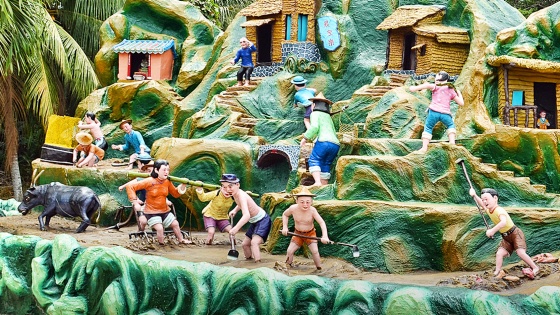
Overview
Haw Par Villa, also known as Tiger Balm Gardens, is surely an iconic concept park located in Singapore. This exclusive attraction provides site visitors a glimpse into Chinese mythology and folklore through its beautiful and intricate statues, dioramas, and displays. Let's consider a better look at the important elements of the interesting destination.
History:
Haw Par Villa was to begin with built by Aw Boon Haw, the magnate powering the famed Tiger Balm ointment. The park opened its doorways in 1937 as a means to both equally entertain and educate persons about conventional Chinese values, heritage, and beliefs. Throughout the years, it's got gone through many renovations but has managed to keep its primary appeal.
Mythological Figures:
One of many major highlights of Haw Par Villa is its wide selection of statues depicting people from Chinese mythology and legends. People will come upon figures like Journey to the West's Sunshine Wukong (the Monkey King), Eight Immortals from Daoism, as well as vital deities such as Guanyin (Goddess of Mercy) and Buddha Shakyamuni.
Concept Parks within Haw Par Villa:
In just Haw Par Villa itself are many distinctive places or sections:
10 Courts of Hell: Most likely Probably the most intriguing areas of Haw Par Villa is exploring "The 10 Courts of Hell." Here people can witness graphic scenes depicting punishments for several sins depending on regular Chinese beliefs about afterlife retributions.
Taoist-Mythology Sculptures: This space showcases amazing sculptures depicting tales from historic Taoist myths. These vivid artworks provide to everyday living tales that have been handed down by generations in vivid depth.
Backyard garden Sceneries: Over and above mythological sculptures lie serene gardens crammed with picturesque landscapes adorned with stunning bouquets and vegetation—a perfect space for website visitors to website loosen up amidst nature's natural beauty or appreciate a casual stroll.
Teochew Opera Centre: The Teochew Opera Centre is a traditional theater setting that on a regular basis hosts performances in the Teochew opera, a substantial sort of Chinese musical drama with distinct regional qualities in its costumes, tunes, and storytelling.
Cultural Significance:
Haw Par Villa retains huge cultural importance as it provides a chance to take a look at various facets of Chinese lifestyle, folklore, and religious beliefs. It serves as each an open-air museum in addition to a spot for communal functions like festivals or instructional plans enabling site visitors to achieve insights into ancient Chinese traditions.
On top of that, the park's unique intention was to educate site visitors about moral values through vivid depictions of heaven and hell – gratifying advantage and condemning vices. So Haw Par Villa functions as not only an amusement park but will also a moral guidebook educating vital moral concepts from regular Chinese philosophy.
Modern Relevance:
Inspite of currently being constructed a long time back, Haw Par Villa carries on to draw in locals and tourists alike as a result of its uniqueness and timeless attraction. The park has managed to Mix tradition with modern day elements by Arranging gatherings such as artwork exhibitions, lantern festivals all through mid-autumn celebrations showcasing the fusion in between present day aesthetics and common themes associated with the villa.
In recent years, there have already been efforts by authorities to refurbish areas of the attraction while making sure its historical authenticity. This ongoing maintenance makes sure that Haw Par Villa stays accessible for generations to return when preserving its prosperous heritage value.
Conclusion:
Haw Par Villa stands out among the Singapore's points of interest for its immersive encounter into legendary realms by intricately-made sculptures depicting deities, legends, morality tales and punishments in Taoist mythology-impressed gardenscapes - all in just a reflective atmosphere emphasizing everyday living classes based upon compassion shown toward Many others because it conveys historical knowledge guided by ethical principles conducive for self-improvement Situated amidst gorgeous scenic landscapes making it ideal equally for cultural exploration fanatics thinking about China's vast mythology/heritage/backgrounds/legends simultaneously(proporotinately with thanks rverence in direction of central topic of symbolizing traditional Chinese lifestyle and beliefs).